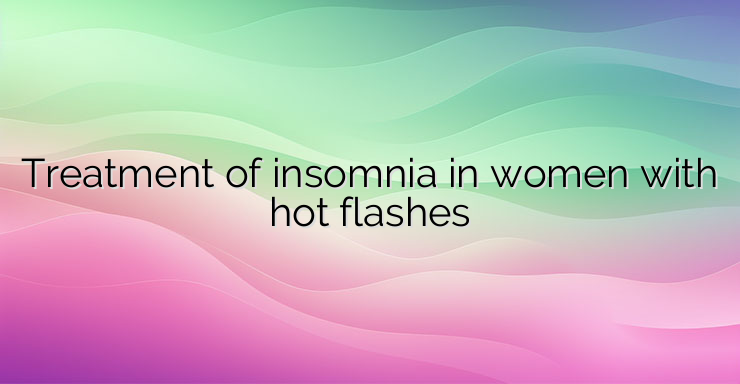Hot flashes are a very common symptom in women who are approaching a certain age. They often cause insomnia before, during and after the menopause period. Insomnia, along with hot flashes and sweating, lowers women’s quality of life. Despite their frequency, however, treatment options are significantly limited. The drug Suvorexant is safe and effective. This statement was confirmed by researchers at Brigham and Women’s Hospital. They conducted a randomized, double-blind, placebo-controlled clinical trial. Current treatment available often includes cognitive behavioral therapy and medications such as non-benzodiazepine GABA-A receptor modulators, eg Zolpidem. Hormone therapy could also improve sleep in middle-aged women with insomnia that is associated with night sweats. Despite the relatively good results they show, these therapies are associated with the appearance of a number of side effects. The research conducted was done because of the promising results seen with Suvorexant therapy. The drug blocks receptors for the neuropeptide orexin, which is associated with states of arousal and insomnia, and could also contribute to hot flashes. According to previous studies, orexin levels in postmenopausal women are three times higher than in premenopausal women. For this reason, the research team conducted a four-week study in which 60 women between the ages of 40 and 65 were followed during their Suvorexant therapy or placebo therapy. Each participant was given a personal assessment through individual consultations about the severity of their insomnia. They were also asked to keep a diary in which they recorded their hot flashes and the frequency of their night sweats. Their insomnia symptoms were assessed using a Specific Insomnia Severity Index (ISI). Observations showed that the severity of symptoms at the end of the four-week study, compared to baseline, was greater in the Suvorexant-treated group than in the placebo group. The difference is significant. The number of night sweats in this group also decreased compared to the control group. However, no difference in daytime symptoms was observed. The results are published in the journal Sleep. Sources: https://academic.oup.com/sleep/advance-article-abstract/doi/10.1093/sleep/zsac007/6503732?redirectedFrom=fulltext


Leave a Reply